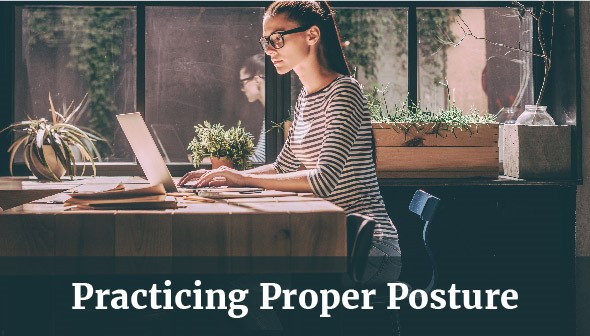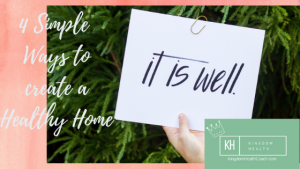3 Posture Perfecting Moves

Strengthening the back muscles around the spine is vital to ensure proper posture, and luckily there are several exercises and forms of movement that can help you to do so safely. Stretching is good for the body. You may know or been told at some point that it’s important to stretch before working out…or after working out.
The truth is stretching type movements are good before, during and after your workout but also useful throughout your day every day.
As well as reducing the risk of sustaining an injury during your activity, stretching allows for adequate blood flow and circulation to reach your large muscle groups. These muscle groups are called upon daily to keep you standing, walking or sitting up. Become aware of how your body is a series of interconnected muscles, cells, organs and ligaments. This awareness helps you visualize every movement as a small part of the whole body moving as one.
The key to decreasing tension-related stress is consistency, proper alignment or posture, and correct muscle engagement. Chronic stress, anxiety, and pain in areas like the neck, shoulders, knees, or ankle joints may be relieved and gradually reduced by engaging stretches that target these areas. Stretching also stimulates nervous system receptors which help to decrease the production of stress hormones like cortisol, known as the ‘fight or flight’ hormone. This means that the more you stretch, the more relaxed you become, and the more likely you are to experience a feeling of ease and relief.
Simple is often the best even if it is also the easiest place to start! Here are simple stretches and movements to improve posture, extend range of motion and relieve temporary pain.
After an injury to my shoulder, I used this exercise every day for pain relief and to regain mobility.
WALL ANGEL: This stretch is great for correcting posture and bringing a little more body awareness to your spinal alignment.
Variation 1
Stand with your back against a wall, bend the knees almost as if you were sitting in a chair.
Keep the entire spine in contact with the wall, while bringing the arms up so the elbows are parallel to the shoulders and the backs of the hands pressed back against the wall. Keep your feet about 4 inches away from the base of the wall. Hold for about 3 seconds, and then release.
Variation 2
Stand with your back against the wall. Keep your back as near the wall as possible in a standing position while bringing your arms up and out to your sides, elbows parallel to shoulders and backs of hands pressed against the wall. Hold for 3 seconds and then slowly slide your hands back down the wall until they are at your side again. Repeat up to 5 times.
FORWARD FOLD: A great stretch to practice for lengthening out the hamstrings and spine
Sit with your legs extended in front of you with the toes flexed back towards you.
Breathe in and extend your arms overhead, keeping the shoulders relaxed.
With the spine straight, start to hinge forward at the hips over the extended legs as you exhale (if you start to round your upper back, then you’ve gone too far).
Hold with the chin tucked and head relaxed for a few deep breaths.
CHIN TUCKS: One of the most effective posture movements for combating neck pain
This move may be performed standing or seated. For standing version, start with your back against the wall, feet facing forward at hip distance apart. Keep your neck in relaxed position. Tuck your chin toward your sternum or neck without holding your breath. Hold the position for 3 to 5 seconds and relax.
Once you are familiar with the correct position for this move, you can practice anytime during the day especially while seated at your computer for some instant neck relief.
One hint that may help is to think of how a turtle pulls its head in an out its shell. You want to have the chin out to begin (relaxed) and then tuck it in.
One thing preventative health professionals will always recommend, no matter what the illness, injury, or imbalance may be, is that maintaining mobility of the physical body is KEY. It’s key to good health, continued strength and mobility, and overall is key to ensuring a happy, healthy relationship with movement and the way you interact with the world around you.
Remember, your range of motion is not dictated by your muscle density, but rather the inner skeletal structures which facilitate bone and joint action.
This means that the joints have a specific range of motion, regardless of muscle or fat mass surrounding them. Take slow, steady steps, and you’ll gradually begin to increase your alignment and range of motion.
The practice of proper posture is a great place to begin for increased health! Another step to increase your wellness goals is the work you do with a coach. It is a step by step process that secures your goals. Why not schedule your free discovery call with me now? It could be the best 20 minutes you’ve ever spent.


